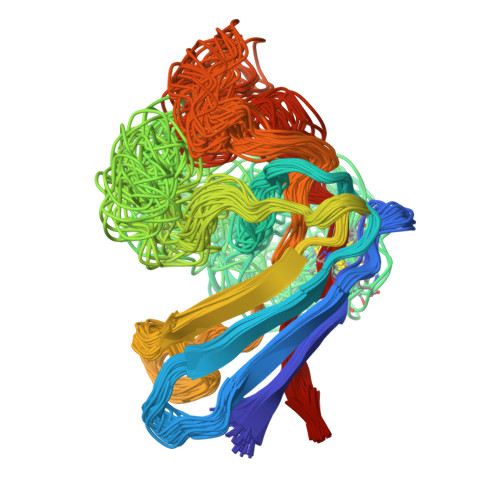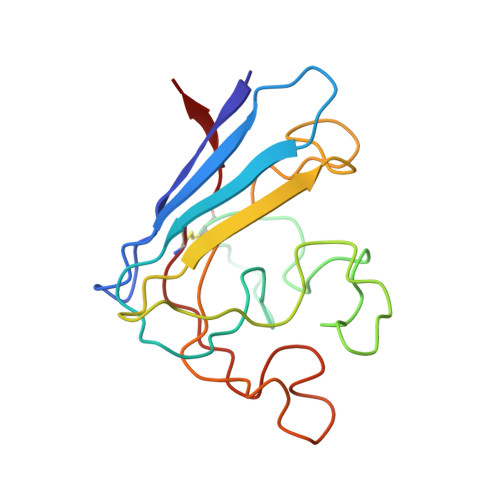Solution structure of Apo Cu,Zn Superoxide Dismutase: Role of Metal Ions in Protein Folding
Banci, L., Bertini, I., Cramaro, F., Del Conte, R., Viezzoli, M.S.(2003) Biochemistry 42: 9543-9553
- PubMed: 12911296
- DOI: https://doi.org/10.1021/bi034324m
- Primary Citation of Related Structures:
1RK7 - PubMed Abstract:
The solution structure of the demetalated copper, zinc superoxide dismutase is obtained for the monomeric Glu133Gln/Phe50Glu/Gly51Glu mutant through NMR spectroscopy. The demetalated protein still has a well-defined tertiary structure; however, two beta-strands containing two copper ligands (His46 and His48, beta4) and one zinc ligand (Asp83, beta5) are shortened, and the sheet formed by these strands and strands beta7 and beta8 moves away from the other strands of the beta-barrel to form an open clam with respect to a closed conformation in the holoprotein. Furthermore, loop IV which contains three zinc ligands (His63, His71, and His80) and loop VII which contributes to the definition of the active cavity channel are severely disordered, and experience extensive mobility as it results from thorough (15)N relaxation measurements. These structural and mobility data, if compared with those of the copper-depleted protein and holoprotein, point out the role of each metal ion in the protein folding, leading to the final tertiary structure of the holoprotein, and provide hints for the mechanisms of metal delivery by metal chaperones.
Organizational Affiliation:
Department of Chemistry and Centro Risonanze Magnetiche, University of Florence, Via Luigi Sacconi 6, 50019 Sesto Fiorentino, Italy.
















